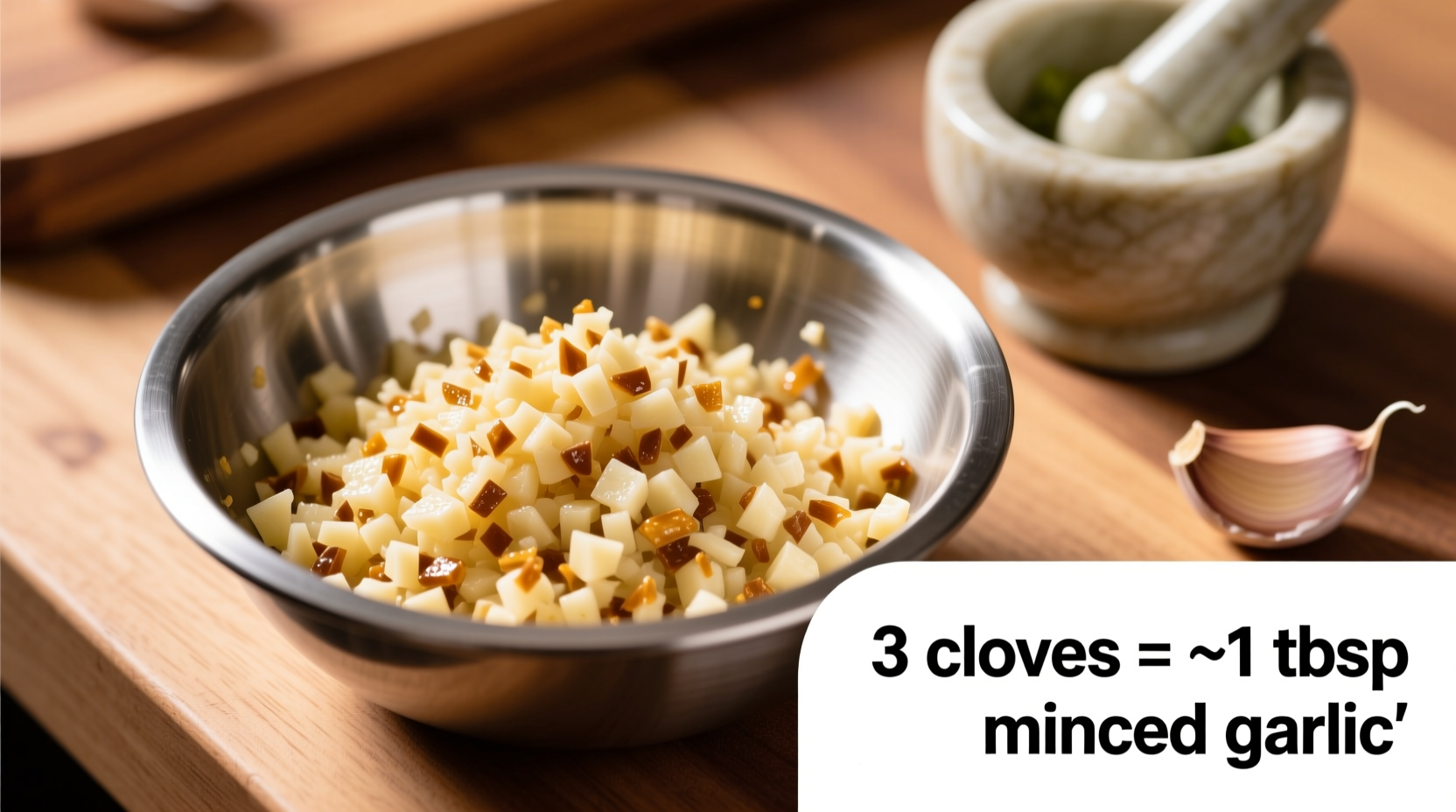Getting garlic measurements right can make or break your dish. Whether you're following a recipe that calls for minced garlic but only have whole cloves, or vice versa, understanding these conversions is essential for consistent cooking results. Let's explore the details so you can confidently handle any garlic measurement situation.
Understanding Garlic Size Variations
Garlic cloves aren't uniform in size, which affects conversion accuracy. A single clove can range from small (¼ teaspoon minced) to extra large (1 teaspoon minced). When recipes specify "medium" cloves, they're referring to cloves about 1 inch long and ½ inch in diameter—the standard used in professional kitchens.
| Garlic Form | Equivalent to 3 Medium Cloves | Equivalent to 1 Medium Clove |
|---|---|---|
| Minced garlic | 1 ½ teaspoons (½ tablespoon) | ½ teaspoon |
| Garlic paste | 1 ½ teaspoons | ½ teaspoon |
| Garlic powder | ⅛ teaspoon | ⅛ teaspoon |
| Garlic salt | ¼ teaspoon | ⅛ teaspoon |
This conversion chart reflects data from the USDA National Nutrient Database and culinary standards used by professional cooking institutions. Note that garlic powder and salt require significantly less quantity due to their concentrated nature.
Practical Measurement Techniques
When converting fresh garlic, follow these chef-recommended methods:
- For precision: Mince your garlic, then press it into a measuring spoon to eliminate air gaps
- For speed: Use the flat side of your knife to estimate—3 medium cloves roughly fill half a tablespoon
- For roasted garlic: 3 roasted cloves yield about 1 teaspoon of paste due to moisture loss
Professional chefs at the Culinary Institute of America emphasize that proper garlic preparation technique significantly impacts both measurement and flavor release. Always mince garlic just before use for maximum flavor impact.
Storage Considerations for Minced Garlic
According to USDA food safety guidelines, freshly minced garlic should be used within 24 hours for optimal flavor and safety. If storing longer:
- Refrigerate in an airtight container with a thin layer of olive oil
- Use within 3-5 days (per FDA food code recommendations)
- Never store at room temperature for more than 4 hours due to botulism risk

Flavor Intensity Factors
The actual flavor impact depends on several variables beyond simple volume:
- Age of garlic: Older bulbs develop stronger, sometimes bitter flavors
- Preparation method: Crushing releases more allicin than mincing
- Cooking time: Longer cooking reduces pungency but develops sweetness
- Regional varieties: California garlic tends milder than Chinese varieties
When substituting minced for whole cloves in sensitive dishes like aioli or salad dressings, start with ⅔ of the recommended amount and adjust to taste. Remember that garlic's flavor continues developing even after cooking stops.
Common Measurement Mistakes to Avoid
Many home cooks make these critical errors:
- Using jarred minced garlic without adjusting for preservatives (typically 20% less potent)
- Not accounting for moisture content in fresh versus dried garlic
- Measuring minced garlic loosely instead of packed
- Ignoring the significant flavor difference between young spring garlic and mature bulbs
For authentic results in international cuisines, note that Mediterranean recipes often use larger quantities than East Asian dishes. Always consider the culinary tradition behind your recipe when making substitutions.
When Precision Matters Most
Certain dishes require exact garlic measurements:
- Emulsified sauces: Aioli and mayonnaise can break with too much garlic
- Baking: Garlic bread proportions affect dough rise and flavor balance
- Pickling: Incorrect garlic amounts impact preservation safety
- Raw applications: Bruschetta and salad dressings show garlic flaws immediately
In these cases, weighing your garlic provides the most accurate results—3 medium cloves weigh approximately 9 grams. This method bypasses size variations that affect volume measurements.











 浙公网安备
33010002000092号
浙公网安备
33010002000092号 浙B2-20120091-4
浙B2-20120091-4